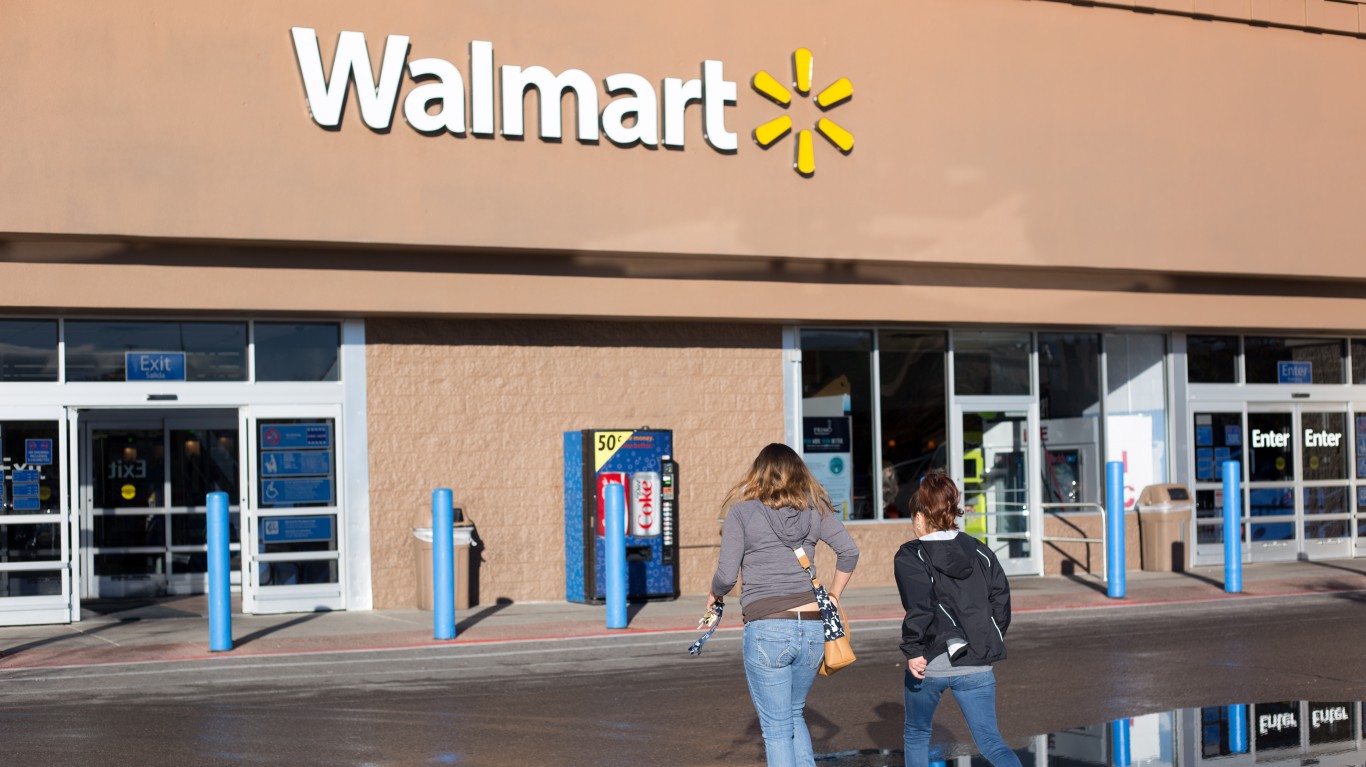
When Best Buy Co. Inc. (NYSE: BBY) reported fourth-quarter results Wednesday morning, the company posted operating income of $881 million on sales totaled $13.48 billion in the quarter. That works out to an operating margin of 6.5%.
Online e-commerce giant Amazon.com Inc. (NASDAQ: AMZN) reported quarterly results in February with an enterprise-wide operating margin of 2.9% on sales of $43.7 billion and an operating profit of $1.3 billion. On just its e-commerce sales, the company’s global operating profit was $329 million on sales of $40.2 billion, an operating margin of a measly 0.8%.
So why is Amazon slaughtering Best Buy, Target Corp. (NYSE: TGT) and Macy’s Inc. (NYSE: M)? Target, which reported earnings on Tuesday, posted operating income of $821 million on sales of $20.69 billion for an operating margin about 4.0%. Macy’s reported operating margin of 9.6% on operating income of $815 million on sales of $8.52 billion.
Even given Amazon’s minuscule retail margin, the company continues to wreak havoc on traditional retailers. There are several possible factors contributing to Amazon’s growth at the expense of virtually every other retailer.
First, since its founding Amazon has chased growth rather than profit. This gave some investors heartburn, especially because the company has never paid a dividend. The company’s lack of physical stores keeps overhead expenses way down as well, leaving Amazon room to make offers that are hard for traditional retailers to match.
Second, it defended its first-mover advantage by offering something no competitor has succeeded in matching: free two-day shipping for a subscription price of $99 a year. Amazon then piled on the benefits for Prime with streaming video, music and other items. Again, volume over profit. In 2016, subscription services contributed $6.4 billion to sales.
Third, Amazon Web Services (AWS) added $3.5 billion to fourth-quarter sales and $12.22 billion to full-year sales. In the fourth quarter, the company’s profit margin on AWS was about 26.5%.
Only Wal-Mart Stores Inc. (NYSE: WMT) appears to have fought back with limited success against Amazon, and even the world’s largest retailer has some issues. Operating income in the fourth quarter totaled $6.21 billion on sales of $129.75 billion, for an operating margin of about 4.8%. E-commerce sales rose 29% and gross merchandise value rose 36.1%, including Jet.com and online grocery sales. But U.S. operating income slipped 2.5% in the fourth quarter, and consolidated operating income fell 6.6% year over year in the quarter.
Both Target and Best Buy have announced big changes going forward to make themselves more competitive with Amazon. Target is planning to cut prices and open smaller stores in some cities and near college campuses. Best Buy wants to expand its online operations. Both plans are expensive and will require something that shareholders notoriously lack: patience.
Wal-Mart’s turnaround — if indeed one quarter of good performance is the beginning of a turnaround — took the better part of two years. Both Target and Best Buy think they can make the changes they’ve planned in a year. Stay tuned.
Are You Still Paying With a Debit Card?
The average American spends $17,274 on debit cards a year, and it’s a HUGE mistake. First, debit cards don’t have the same fraud protections as credit cards. Once your money is gone, it’s gone. But more importantly you can actually get something back from this spending every time you swipe.
Issuers are handing out wild bonuses right now. With some you can earn up to 5% back on every purchase. That’s like getting a 5% discount on everything you buy!
Our top pick is kind of hard to imagine. Not only does it pay up to 5% back, it also includes a $200 cash back reward in the first six months, a 0% intro APR, and…. $0 annual fee. It’s quite literally free money for any one that uses a card regularly. Click here to learn more!
Flywheel Publishing has partnered with CardRatings to provide coverage of credit card products. Flywheel Publishing and CardRatings may receive a commission from card issuers.
Thank you for reading! Have some feedback for us?
Contact the 24/7 Wall St. editorial team.




